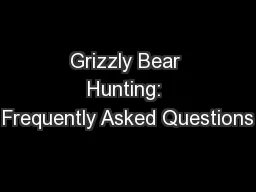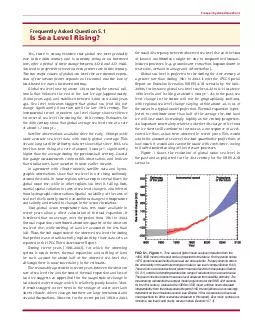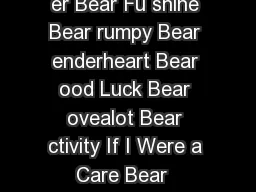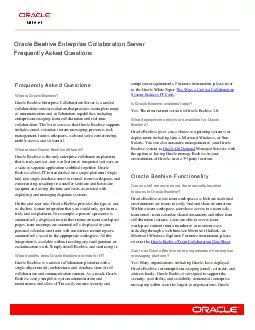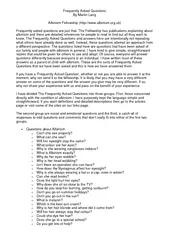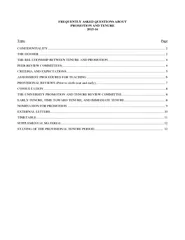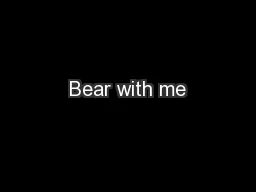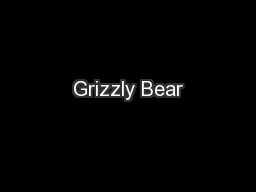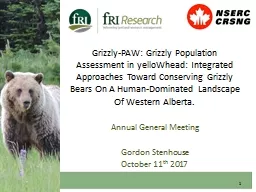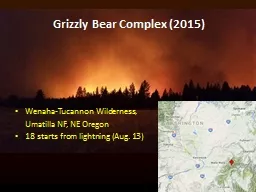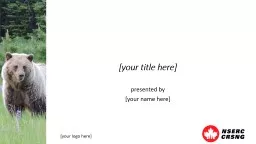PDF-Grizzly Bear Hunting: Frequently Asked Questions
Author : briana-ranney | Published Date : 2016-06-10
Page 1 of 17 Fish Wildlife and Habitat Management Branch 7 October 2010 British Columbians have widely varying views on the ethics and ecology of Grizzly Bear hunting
Presentation Embed Code
Download Presentation
Download Presentation The PPT/PDF document "Grizzly Bear Hunting: Frequently Asked Q..." is the property of its rightful owner. Permission is granted to download and print the materials on this website for personal, non-commercial use only, and to display it on your personal computer provided you do not modify the materials and that you retain all copyright notices contained in the materials. By downloading content from our website, you accept the terms of this agreement.
Grizzly Bear Hunting: Frequently Asked Questions: Transcript
Download Rules Of Document
"Grizzly Bear Hunting: Frequently Asked Questions"The content belongs to its owner. You may download and print it for personal use, without modification, and keep all copyright notices. By downloading, you agree to these terms.
Related Documents

